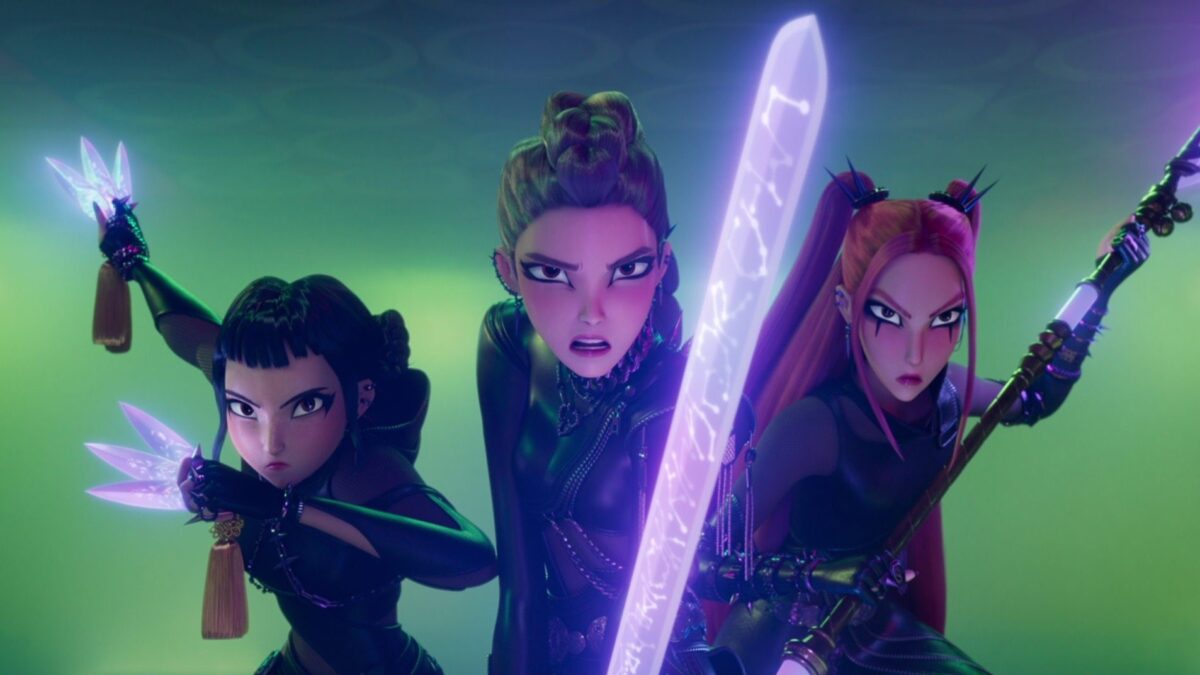I'm done hidin', now I'm shinin'
I am skeptical of platitudes hastily awarded to any animated feature premiering on Netflix in recent years. The high-profile releases are rarely bad, but they are inconsistent. They can rarely shake the feeling of B-tier picture: The Sea Beast, Apollo 10 1/2, Orion and the Dark, and Nimona are all watchable and pleasant, but underwhelming in one dimension or the other to my eyes. The crown jewel is surely Guillermo del Toro’s Pinocchio, but that one is an outlier. Other than Pinocchio, the most acclaimed outing by Netflix of the 2020s to date is The Mitchells vs. the Machines (a Netflix distribution project, as opposed to an in-house production), which I found to be fine but overpraised — a deeply messy and redundant story letting down adventurous visuals (though I’m due for a rewatch). So despite the cacophonous buzz — especially with the contrast in the glowing reviews from more casual film fans I follow as opposed to the shruggier reviews from animation-heads — I expected KPop Demon Hunters to level out at decent: another glossy, mid-budget curiosity to file under “inoffensive but forgettable.”
It turns out that Mitchells vs. The Machines is an apt comparison, actually, because KPop Demon Hunters operates in a similar space: A well-produced and technically impressive piece of animation by Sony Pictures Animation in the Spider-Verse Lite style, distributed but not produced by Netflix. This time, the style is executed by way of K-pop stagecraft and Korean folklore. That pitch is much more convincing to me than the “trending on Netflix with lots of Twitter-friendly gifs” that had been my impression before we hit play after my 8-year-old asked if we could watch it together this past Friday.
The film follows a three-member K-pop girl group named Huntr/x (pronounced “Hun Tricks” like the climax from Mulan). Its three band members are Rumi (Arden Cho), Mira (May Hong), and Zoey (Ji-young Yoo), who have slight variations on the three Powerpuff Girls personalities: Rumi the strong-willed leader, Mira the snarky grump, and Zoey the bubbly ditz. The trio are not an ordinary product of the K-pop media machine, however: they are part of a long lineage of girl musicians who secretly double as demon hunters, their music the source of their anti-demon combat magic powers and a tool to cast protective charms over the masses. In flashback, their ex-idol manager Celine (Yunjin Kim), also the adoptive mother of Rumi, guides and trains the group. Nowadays, Bobby (Ken Jeong) runs the operation, though he’s oblivious to their demon-hunting.

Huntr/x is on top of the world and on the verge of fully shutting out the demon army led by incorporeal Gwi-Ma (Lee Byung-hun), until Gwi-Ma unleashes a rival boy band to reclaim the airwaves for his own purposes. This rival group, Saja Boys (no connection to “Crank That”), is led by prettyboy Jinu (Ahn Hyo-seop), whose remarkable face card masks a dark deal-with-the-devil past that has rendered him either a demon or so haunted he may as well be. As Huntr/x preps for the Idol Awards, Rumi’s voice begins to crack, and we learn she has her own dark secret she tirelessly hides from everyone, including her bandmates. Huntr/x’s fandom turns on them as their public performances go badly, and the story gradually expands from demon-tinted pop chart sitcom into mythic-scope saga. It culminates in an end-of-the-world concert that either spells salvation or apocalypse, much like the climax of Trolls World Tour.
Visually, KPop Demon Hunters exceeds its streaming profile. Imagine Sony’s trademark, space-mastering 2D-on-3D style shot through gel filters, backstage lighting, touched up with the gloss of a fashion magazine and some touches from classic Asian artstyles. The fight scenes pop like choreography reels, with real music video energy where combat aligns with events in the battle (e.g. a demon appears as the bass drops). The camera never stops gliding. Outside of the battle, the film still has dynamic energy, including the much-giffed scenes when the style goes full chibi to bring out the girls’ personality and vulnerability.
Confession: While I don’t self-identify as a poptimist, I happily defend a lot of chart-topping hits; and yet, I am a full-on tourist in K-pop land with this movie. For a bunch of reasons, including limited exposure and slight repulsion at the specific flavor of performative emotion, I’ve never connected with K-pop. That said, the songs here make a good case for the genre: clean hooks and production that really pops. “Golden” is the standout, and is charting on Billboard in a way that presages a Best Original Song shortlist. (I also predict Best Animated Feature consideration.) The numbers aren’t bolted on, but intricately tied into the movie to the point you can definitely call this a musical.

Narratively, the film alternates between exciting and formulaic. The emotional arc is familiar teen stock plot territory: Rumi must accept her own flaws and learn to be comfortable admitting them to the world. The film shines when it takes those emotional beats and uses its animation style to tie it to epic demon-battling action. The battles are huge and adventurously designed and choreographed. And some of the visual pizazz carries outside of the battles: For example, the romance between Rumi and Jinu gets depicted in dramatic chases and flights of fancy. I have a hunch some of the visual language comes from K-drama TV shows, though I have never actually watched one in my life. And, to the film’s credit, its specific emotional thesis, cliché though it is — that shame mutes you, while community connection turns the volume up — clicks wonderfully with the themes of musical performance.
The biggest unambiguous downside comes in the voice acting. Despite casting separate voice actors from the singers for each of the main characters, the vocal performances are surprisingly flat and graceless. Maybe there’s a vocal texture or accent that I can’t put my finger on that’s bugging me, but I kept being pulled out by awkward line deliveries or weird chemistry between characters. This flattens the talkier scenes a bit, especially next to the polish of the musical segments.
That said, the craft departments are working overtime. The visual design is outstanding: Characters’ costumes strike a perfect balance between idol glam and folklore detail. Huntr/x sports norigae-coded stagewear, while the boy band goes full monochrome reaper chic. The animal sidekicks are equal parts plushie cutie and intimidating portal guardian. A real sweet spot. And the animation of facial expressions, both the cartoonish and the subtle, is pretty outstanding in bringing characters and moments to life.

All in all: a win, and a solid one. KPop Demon Hunters is not a canonical entry in the animation pantheon the way Sony’s Spider-Verse movies are, but it’s far more inventive and stylish than I expected from a release platform that often reads as a digital dumping ground. It barely squeaks into the rating I give it below, but that certainly puts it as a certain nominee in my own B.A.D.S. awards for my favorite animated film of the year. If you haven’t seen the film yet, try catching it during the theatrical run (which Netflix hastily threw together after the film’s popularity exploded). I might even see it again. KPop Demon Hunters is one built for crowds and big screens, especially if you can see it with kids like I did with my own, who each unreservedly adored the film. They’ve been humming “Golden” for two days straight now.
Is It Good?
Very Good (6/8)
Dan is the founder and head critic of The Goods. Follow Dan on Letterboxd. Join the Discord for updates and discussion.

